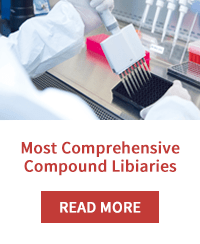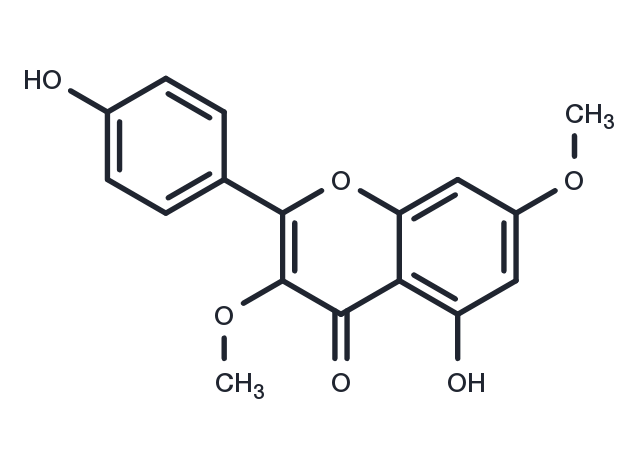Powder: -20°C for 3 years | In solvent: -80°C for 1 year


Kumatakenin can suppress <80% of the SOS-inducing activity of Trp-P-1 at <0.06 micromol/mL.

| Pack Size | Availability | Price/USD | Quantity |
|---|---|---|---|
| 1 mg | In stock | $ 129.00 | |
| 5 mg | In stock | $ 320.00 | |
| 10 mg | In stock | $ 475.00 | |
| 25 mg | In stock | $ 779.00 | |
| 50 mg | In stock | $ 1,090.00 | |
| 1 mL * 10 mM (in DMSO) | In stock | $ 330.00 |


| Description | Kumatakenin can suppress >80% of the SOS-inducing activity of Trp-P-1 at <0.06 micromol/mL. |
| In vitro | The methanol extract was re-extracted with hexane, dichloromethane, butanol, and water. A dichloromethane fraction showed a suppressive effect. Suppressive compounds against furylfuramide in the dichloromethane fraction were isolated by SiO(2) column chromatography and identified as 7,4'-di-O-methyleriodictyol (1), 7, 3',4'-tri-O-methyleriodictyol (2), and 3,7,4'-tri-O-methylkaempferol (3). In addition, three flavonoids, ombuine (4), pachypodol (5), and Kumatakenin (6), were isolated and identified from the dichrolomethane fraction. Compounds 1 and 3 suppressed >50% of the SOS-inducing activity at <0.6 micromol/mL, and the ID(50) values of both compounds were 0.25 micromol/mL. Compound 2 showed a weakly suppressive effect (17%) at a concentration of 0.6 micromol/mL, and compounds 4-6 did not. These compounds were also assayed with 3-amino-1,4-dimethyl-5H-pyrido[4,3-b]indole (Trp-P-1), which requires liver metabolizing enzymes. Compounds 3,4,5,Kumatakenin (6) suppressed >80% of the SOS-inducing activity of Trp-P-1 at <0.06 micromol/mL, and compounds 1 and 2 suppressed 87 and 63% at a concentration of 0.3 micromol/mL. In addition, these compounds were assayed with activated Trp-P-1, and the suppressed effects of these compounds were further decreased when compared to Trp-P-1. |
| Source |
| Synonyms | Jaranol, Kaempferol 3,7-O-dimethyl ether |
| Molecular Weight | 314.29 |
| Formula | C17H14O6 |
| CAS No. | 3301-49-3 |
Powder: -20°C for 3 years | In solvent: -80°C for 1 year
DMSO: 60 mg/ml (190.9 mM)
You can also refer to dose conversion for different animals. More
bottom
Please see Inhibitor Handling Instructions for more frequently ask questions. Topics include: how to prepare stock solutions, how to store products, and cautions on cell-based assays & animal experiments, etc.
Kumatakenin 3301-49-3 Apoptosis Microbiology/Virology Anti-infection Jaranol ovarian Inhibitor cell inhibit Kaempferol 3,7-O-dimethyl ether cancer inhibitor
